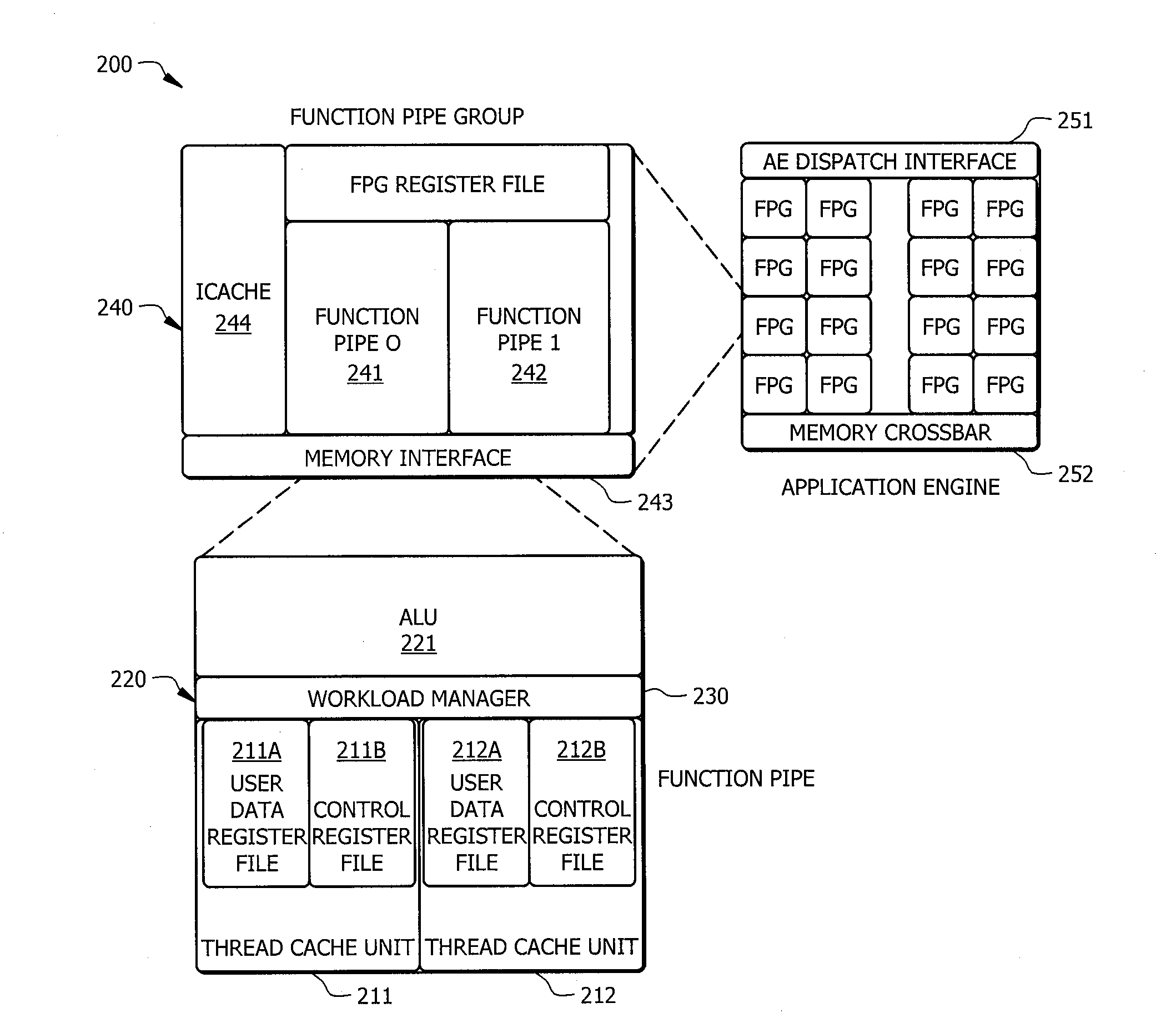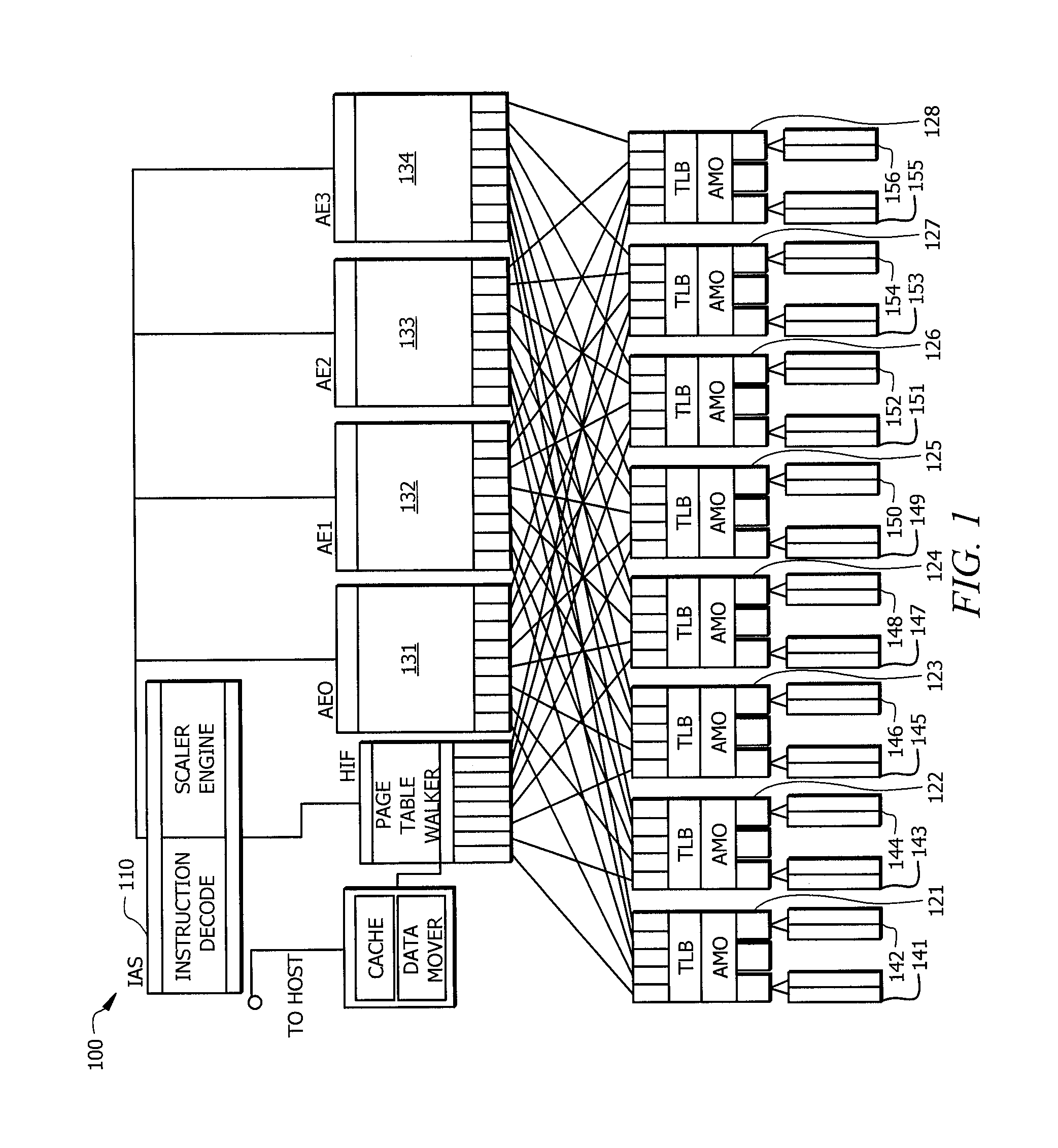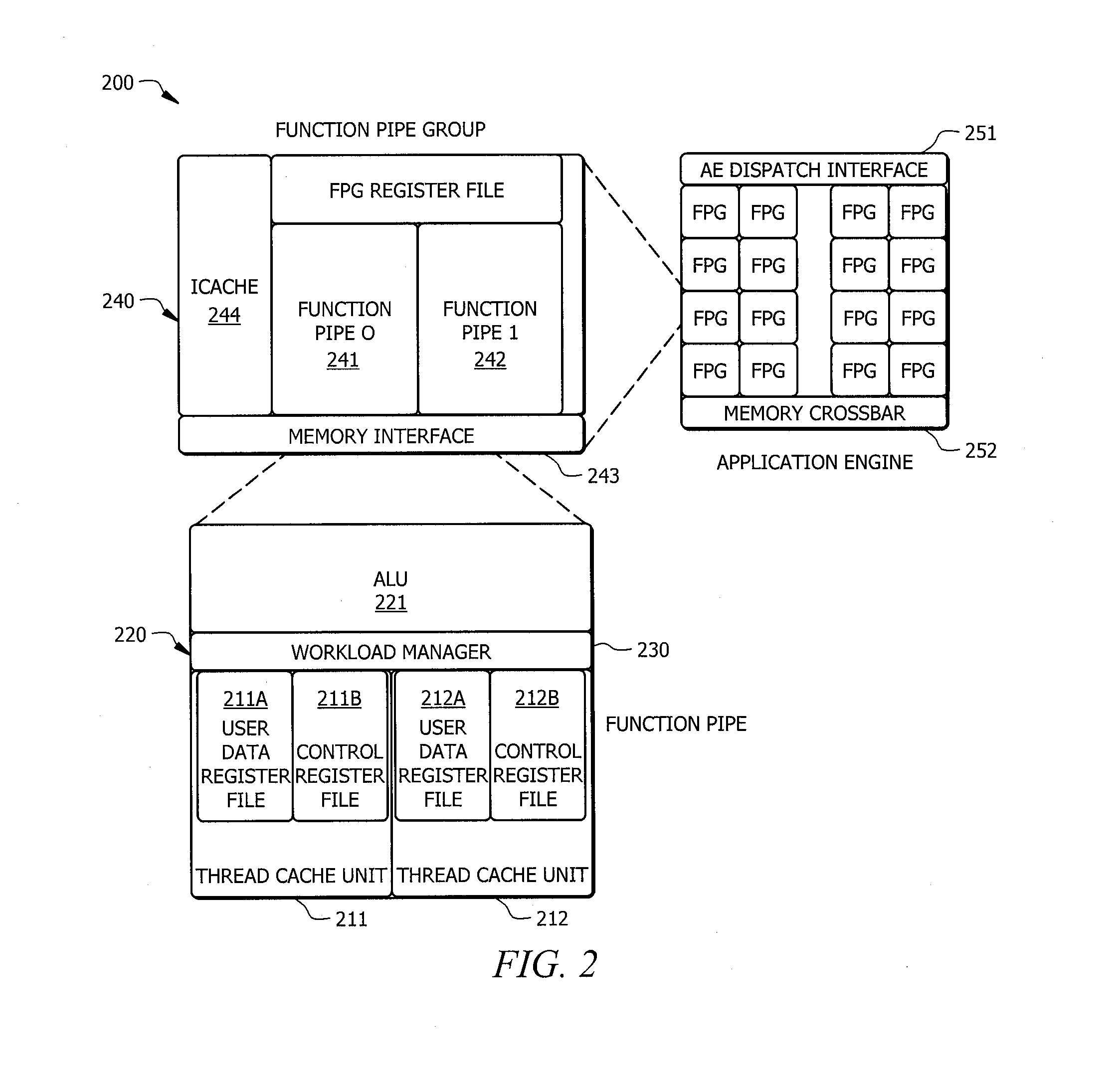Systems and methods for efficient scheduling of concurrent applications in multithreaded processors
a multi-threaded processor and concurrent application technology, applied in the field of multi-threaded computing, can solve the problems of significant processing time consumption, data cache locality is difficult to achieve, and the memory bandwidth has failed to grow at comparable rates, so as to achieve the effect of efficient execution of applications and easy addition of user-defined arithmetic functionality
- Summary
- Abstract
- Description
- Claims
- Application Information
AI Technical Summary
Benefits of technology
Problems solved by technology
Method used
Image
Examples
Embodiment Construction
[0024]Embodiments of the invention provide a hybrid multithreading framework (HMTF) in a multicore environment where data locality, memory bandwidth, and concurrent execution are metrics driving the processing efficiency. A HMTF implemented according to embodiments of the invention provides a framework for constructing tightly coupled, chip-multithreading (CMT) processors that contain specific features well-suited to hiding latency to main memory and executing highly concurrent applications. A modular processor framework and instruction set architecture are provided by HMTF embodiments herein designed to efficiently execute applications whose memory access patterns are irregular or non-unit stride. In operation according to embodiments, all instructions of a HMTF have the ability to participate in the concurrency algorithms present in a hardware scheduler that drive context switch events, as discussed in detail below.
[0025]To facilitate an understanding of the concepts herein, a bri...
PUM
 Login to View More
Login to View More Abstract
Description
Claims
Application Information
 Login to View More
Login to View More - R&D
- Intellectual Property
- Life Sciences
- Materials
- Tech Scout
- Unparalleled Data Quality
- Higher Quality Content
- 60% Fewer Hallucinations
Browse by: Latest US Patents, China's latest patents, Technical Efficacy Thesaurus, Application Domain, Technology Topic, Popular Technical Reports.
© 2025 PatSnap. All rights reserved.Legal|Privacy policy|Modern Slavery Act Transparency Statement|Sitemap|About US| Contact US: help@patsnap.com



